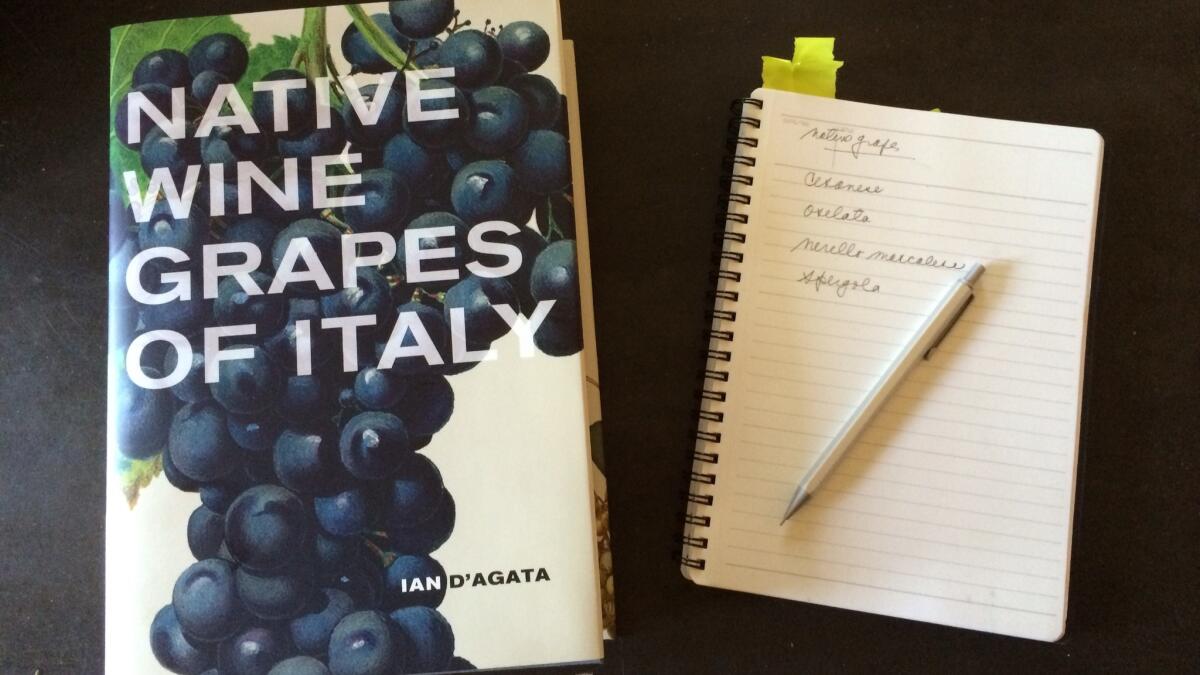The 500-plus(!) native wine grapes of Italy, from Aglianico to Zibibbo

- Share via
Got the hammock strung up? Check. A chilled bottle of Prosecco or Vermentino? Check. Notebook handy? Pen or pencil? Check.
Time to do some studying. Our textbook: “Native Wine Grapes of Italy” by Ian D’Agata (University of California Press, Berkeley). That’s 620 pages of hard-won knowledge about Italy’s familiar and obscure grapes, including an index of grape varietals that runs to 10 pages, two columns each — about 500 in all.
Kind of overwhelming, but oh so fascinating. The only thing to do is plunge in. Let’s try a little test to see where you are Italian grape-wise. Do you know any of these grapes? Biancolella? Bombino Nero? Cornalin? Nosiola? Vuillermin? Caddiu?
I thought not. Neither did I. But I’m intrigued by the names and the histories of these grapes in Italy. Caddiu, for example, is from Sardegna, something that could be guessed from the ending of the name. And yet this turns out to be a rare variety currently grown on only 12 hectares in Sardinia. Ah, but it’s used mainly as a table grape, according to D’Agata, a wine writer and educator based in Rome who writes for the British wine magazine Decanter and for Stephen Tanzer’s International Wine Cellar newsletter.
“I am enthralled with native grapes, each one’s long-standing relationship with its local geology and climate, and how each one is expressed in unique wines,” writes D’Agata. When he started out writing about native Italian grapes, many were at risk of extinction. “This book you hold in your hands is the summa of close to 30 years spent in the company of wine, and more pertinently, 13 years of research, vineyard walks and interviews especially devoted to the native grapes and wines of Italy.”
I’m eager to listen in and learn that Biancolella has long been associated with the island of Ischia not far from Capri and may have arrived courtesy of emigrating Euboean Greeks as early as 770 BC. And that the same grape is called San Nicola on Capri. On Ischia, Biancolella is grown in high mountain vineyards where “the extremely rich mineral content of the soils doubtless contributes to the considerable potential for complexity of flavor and perfume.” That has me wondering where I can find a bottle of Ischia Biancolella here — or will I just have to go to Ischia?
Anyway, I’m hooked.
Follow @sirenevirbila for more on food and wine
More to Read
Eat your way across L.A.
Get our weekly Tasting Notes newsletter for reviews, news and more.
You may occasionally receive promotional content from the Los Angeles Times.








